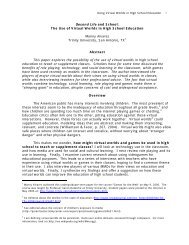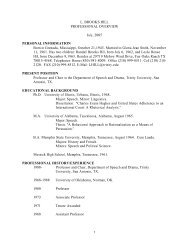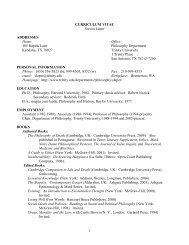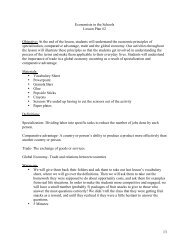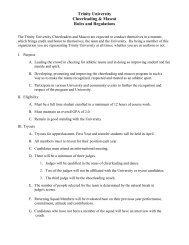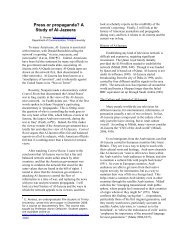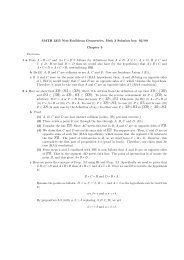Dimensions of Sacred Space in Japanese ... - Trinity University
Dimensions of Sacred Space in Japanese ... - Trinity University
Dimensions of Sacred Space in Japanese ... - Trinity University
You also want an ePaper? Increase the reach of your titles
YUMPU automatically turns print PDFs into web optimized ePapers that Google loves.
Intercultural Communication Studies VI: 2 1996 Randall Nadeau<br />
Cosmos and History: The Myth <strong>of</strong> Eternal Return (New York: 1959), 6-21. Mt. Fuji is not only the<br />
pr<strong>in</strong>ciple symbol <strong>of</strong> the nation, but also the most sacred, and the basis <strong>of</strong> the most popular <strong>of</strong> the<br />
mounta<strong>in</strong> cults. But Fuji is not unique as a holy mounta<strong>in</strong> provid<strong>in</strong>g a "sacred orientation" for the<br />
nation. On the significance <strong>of</strong> sangaku sh<strong>in</strong>kô (mounta<strong>in</strong> beliefs) <strong>in</strong> Sh<strong>in</strong>to, see H. Byron Earhart, A<br />
Religious Study <strong>of</strong> the Mount Haguro Sect <strong>of</strong> Shugendô: An Example <strong>of</strong> <strong>Japanese</strong> Mounta<strong>in</strong> Religion<br />
(Tokyo: 1970), esp. 7-16.<br />
5. For an <strong>in</strong>sightful look at the conflict between public exterior and private self <strong>in</strong> <strong>Japanese</strong> popular<br />
culture, see Ian Buruma, Beh<strong>in</strong>d the Mask: On Sexual Demons, <strong>Sacred</strong> Mothers, Transvestites,<br />
Gangsters, Drifters and Other <strong>Japanese</strong> Cultural Heroes (New York: 1984).<br />
6. An excellent anthropological study <strong>of</strong> the dist<strong>in</strong>ction between 'pr<strong>in</strong>ciple' (tatemae) and '<strong>in</strong>tention'<br />
(honne) can be found <strong>in</strong> Brian Moeran, Language and Popular Culture <strong>in</strong> Japan (Manchester: 1989).<br />
For a suggestive study on the dist<strong>in</strong>ction between "<strong>in</strong>ner" and "outer" <strong>in</strong> <strong>Japanese</strong> culture and<br />
personality, see Kurt S<strong>in</strong>ger, Mirror, Sword and Jewel: A Study <strong>of</strong> <strong>Japanese</strong> Characteristics (New<br />
York: 1973).<br />
7. For a discussion <strong>of</strong> the symbolism <strong>of</strong> heart/belly <strong>in</strong> opposition to face/mouth, see Takie Sugiyama<br />
Lebra, <strong>Japanese</strong> Patterns <strong>of</strong> Behavior (Honolulu: 1976).<br />
112 112






